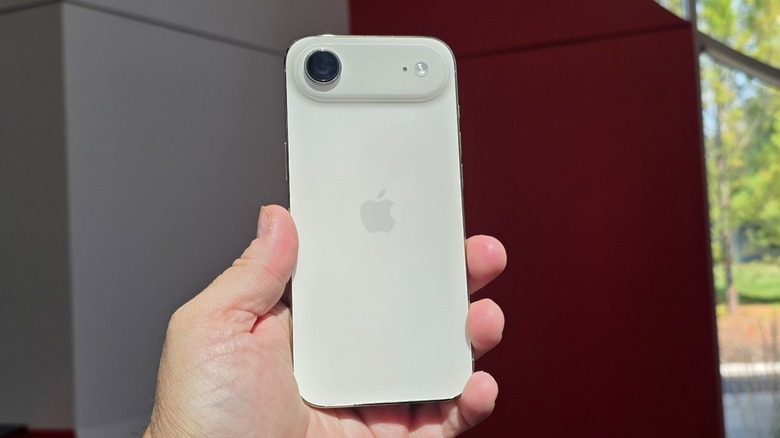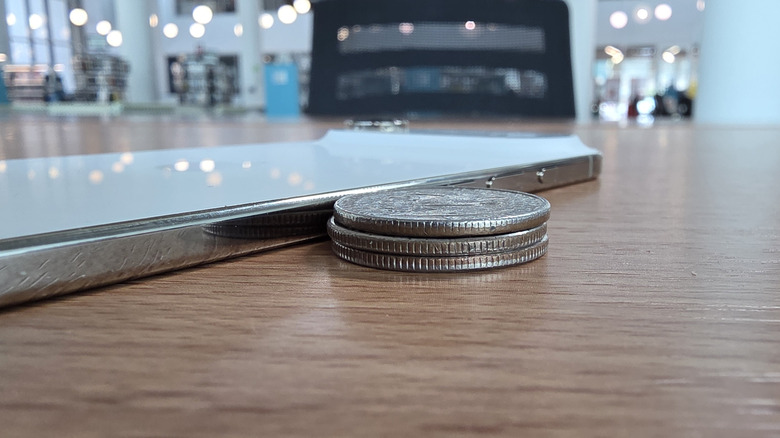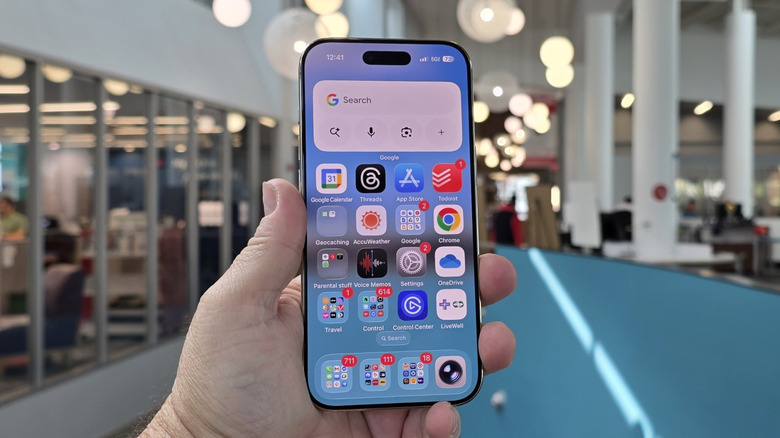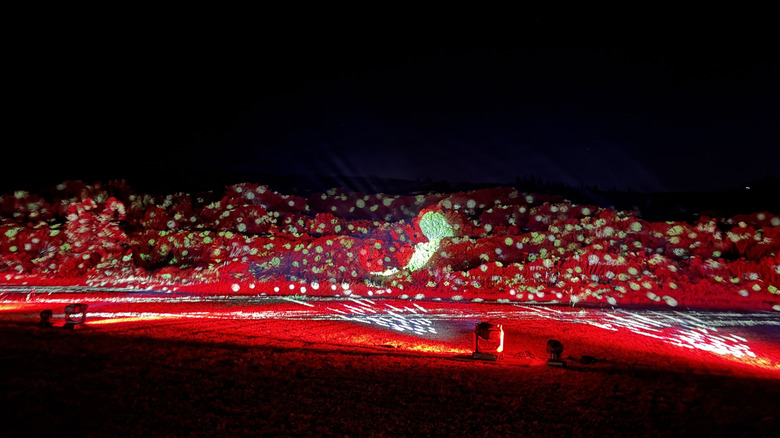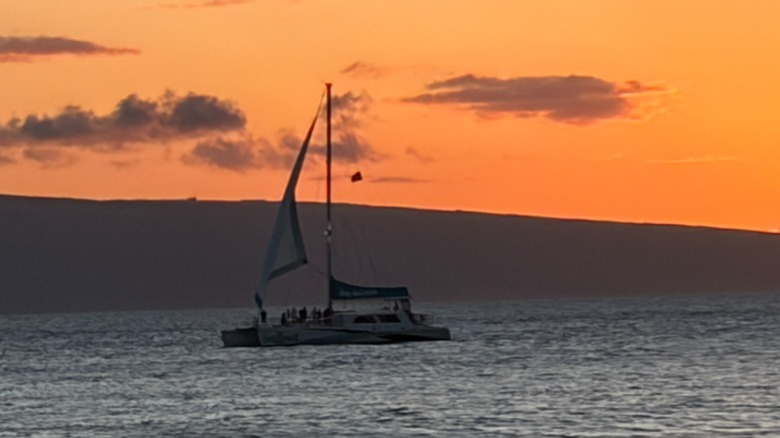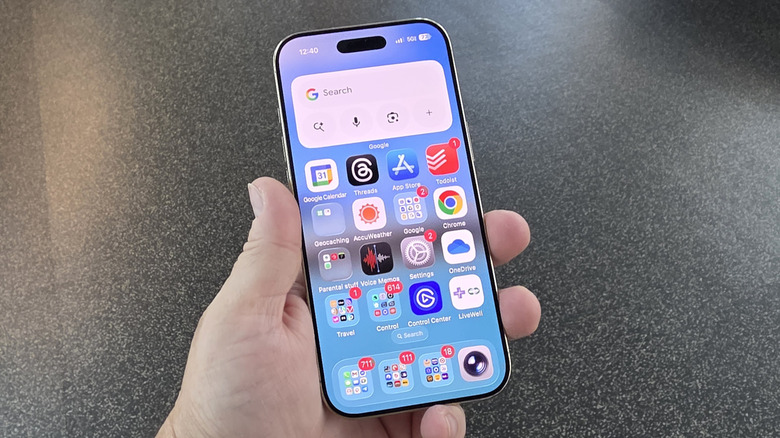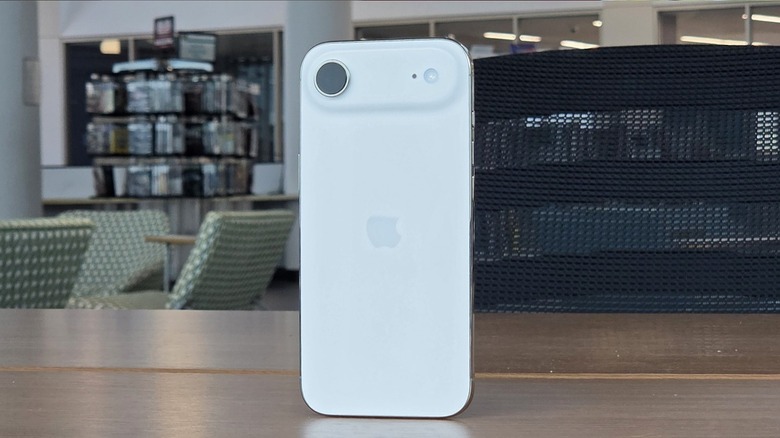iPhone Air Trades More Than Battery For A Slim Body. Are The Sacrifices Worth It?
We may receive a commission on purchases made from links.
Trying something new can be intimidating, especially when you're a very established brand like Apple. But that company is familiar with trying out new concepts to replace previous ideas that weren't working. That's what happened with the iPhone Air. The iPhone 16 Plus didn't sell very well, so it got replaced. The same thing happened with the iPhone 13 Mini (still a favorite of mine — may it rest in peace) and other projects through the years.
Rather, Apple tried something new — or new-ish as it were. As it turns out, the iPhone Air wasn't an entirely new concept as both Samsung, back in May, and Tecno at IFA 2025 both showed off offerings of a similar (super thin smartphone) type. But both of those offerings showed what was possible in a product like the iPhone Air. But neither quite had it right.
Now we have the iPhone Air, and it's an interesting product to say the least. It is ridiculously thin and surprisingly durable, but is it a phone you should buy? That depends entirely on a few important factors. I wanted to find out what this phone was like, so I've been using an iPhone Air review sample provided by Apple for just under a week, and this is my full review.
Let's start with what matters
Normally, I would open up by talking about the hardware, and I'm going to do that here. But I'm going to talk about the most important hardware and answer your most burning question first. What's the battery like? Well, folks, it's not great. But that also doesn't really matter.
It's fair to say the iPhone Air is not an endurance champ. It's also not an endurance also-ran. In fact, I'm fairly sure the iPhone Air accidentally slept through its alarm and forgot there was a race in the first place. If you are looking for an endurance winner, I'll save you the trouble — stop reading now and have a great day!
If you're looking for a phone that will last you a full day off the charger, again, thanks for stopping by. I'm not saying a full day is impossible with the iPhone Air, but I am saying I never had one. It's also important to acknowledge that I did not take the phone through anything approaching a standard review period. 36 hours after I unboxed the phone, I was on an 11-hour flight to Maui, Hi for a tech conference. While there, I was dealing with weak Wi-Fi and weaker cellular signals. I can't definitively say that battery life is bad, but I can tell you one thing.
It never died
Despite all those challenges, I never found myself with a dead phone. Now, it's true, I had plans in place. I carried a Baseus 5,000 mAh slim magsafe battery, and that helped most of the time. I also dropped my phone on the charger when I stopped by my room during the conference. Basically, any time I could recharge the phone for even a short bit of time, I did so.
I live in a country that doesn't experience frequent power outages — I don't need to keep a phone off a charger for more than a day, basically ever. So, it's true that battery life is not great, but it doesn't have to be. The real question you'll have to ask yourself before you fork over $999 for the phone (and another $20 or so for the Baseus charger on Amazon) is whether or not that really matters. Do the benefits outweigh the annoyance of having to carry a battery, or putting your phone on a charging stand when you sit down at your desk at work? I can tell you, I lived with it, and this phone remains a pretty strong contender to be my primary iPhone, even after this review is over. For context, I carry an iPhone and Android phone full time.
What about the camera?
Then of course, there's the singular 48-megapixel camera. Is that camera good enough? Well, to be frank, it is not if you want an ultrawide or a telephoto lens. Not everybody does. I thought I would be disappointed with the single camera on the iPhone Air, and to the extent that I like having a more versatile camera set at my disposal, I was. But I knew I would not have that going in, and so should you.
That being said, the 48-megapixel lens is capable of capturing a good amount of detail whether you're going for a nice macro shot, or you're taking in a nice landscape. This particular iPhone Air review has the benefit of having been written in Hawaii where there is no such thing as a bad photo, but I found myself taken aback by the surprising agility of this camera.
Out of the box, you get 1x and 2x zooms, and Apple is quick to point out that when you zoom in, the company is not just cropping in on the sensor but it's actively using the center pixels of the sensor and piping them through a different ISP (processor) to get a new photo. Personally, I'm not sure I see the difference, but I can say that the 2x shots are very good, just like the main camera sensor shots.
Even at night, folks
When the lights go down, the camera quality doesn't. I didn't really believe it until I tossed those photos up onto a big screen, but the iPhone Air performs quite well at night too.
Moving subjects are still a problem, sometimes, but if no one is moving, I have zero complaints about this phone camera at night and that includes walking while shooting video with no subject in the frame. There is virtually no judder with my footsteps in low light situations which is just a delightful find.
Ironically, the selfie camera, which Apple said is a square sensor that can shoot in portrait or landscape (more on that in the moment), would actually help with stabilization when shooting video. It does, for the subject in frame, but stuff in the background goes a little wonky which can actually be a tad distracting. But so far, the iPhone Air has the best low-light video stabilization I've seen on a phone camera yet — and I haven't even tested the base iPhone 17 yet.
The iPhone Air can also zoom up to 10x, and you absolutely lose detail when you do so, but even then, as long as you're not blowing the photo up larger than a social media site, you won't see the difference.
Center Stage is a little glitchy
Getting back to that square sensor in the selfie camera, I was surprised to see how much I enjoyed using it, but it comes with a caveat. The main concept here is that you can hold your iPhone in portrait orientation or landscape orientation while you shoot photos either in portrait or landscape mode. That part is pretty nifty. I enjoyed switching back and forth between the two manually.
Centerstage has some trouble though. Centerstage is supposed to see that there are multiple people looking at the camera and widen the shot automatically to get them all in the frame. I found very limited success with this though. First, it took me a minute to realize that if I switch between portrait and landscape manually, Centerstage automatically turns off, and have to turn it back on manually.
But even when I did that, I tried it with a few second subjects and it was a 50/50 shot as to whether it would work or not. I suspect there are a few things going on here. First, it worked better when all subjects were looking straight at the camera, so a family gathered around a table with a bunch of side-shots of faces didn't seem to trigger it.
Second, it's human nature to want to get yourself into the frame, rather than let the camera do it for you. So I wonder if on those other experiments the second subject was actively trying to position themselves into the frame so centerstage figured it didn't have to. Regardless, this is a feature that needs to cook a bit longer.
Here's what you get for all that
So the battery life is not amazing, but the cameras are surprisingly good, so what do you get for all that? The iPhone Air is ridiculously thin, which is the main selling point. At 5.6mm it feels pretty great to hold. As one might come to expect the iPhone Air's hardware is incredibly well-refined. The Galaxy S25 Edge feels a lot more industrial than the iPhone Air. Meanwhile, I wouldn't hate is the iPhone Air took some design cues from the Tecno Pova Slim with the fun LED strips on the back in the camera plateau, but that feels a bit too gimmicky for Apple's tastes.
The large 6.5-inch screen is lovely to use, and a lot easier to use given the dimensions and weight compared to something like the iPhone 16 Pro Max that I'd been carrying for the past year. I like having the extra real estate to play with over the 6.3-inch iPhone 17.
Packing all the internals of the phone into that camera plateau is an interesting design choice — I'm into it. That's especially so since the iPhone Air still has MagSafe magnets, which would have been an easy sacrifice to make in a device that is so thin.
Liquid glass
The software is more or less the same in the iPhone Air as it is in the iPhone 17 and the iPhone 17 Pro Max. I'll dive more into the software in my iPhone 17 review coming up on SlashGear soon, but what I will say is that I'm a fan of iOS 26 and Liquid Glass. While some who installed the beta back in June complained about visibility issues — and those are still possible — I never ran into a situation where I had trouble reading the screen, except for normal instances where I simply wasn't wearing my reading glasses (because I'm old, you see).
Liquid Glass is Apple's new interface where most UI elements have a layered, glass-like design. The result is, buttons distort the view of elements behind them, much like a glass of water would. This has the potential to be problematic, but even before Liquid Glass was a thing, I simply blurred my wallpaper on my home screen to avoid readability issues when things didn't look like glass. Now that they do, that benefit remains; who could have seen that coming?
Not every change is for the better. I'm still about 50/50 on the camera interface. Notably, you need to swipe up to access photo and video options like timers, resolution, and the like. Every now and then, I'll accidentally swipe up and minimize the camera, rather than opening the settings I was looking for. Beyond that, I like Liquid Glass's design.
iPhone Air Price, Availability, and Final Verdict
Here the thing: If you're going to buy an iPhone Air, you're going to have to deal with battery issues. While the Samsung Galaxy S25 Edge is capable of getting through a full day, the iPhone Air cannot — or hasn't been able to do so in our testing, so far. It bears repeating that I have not tested this phone under normal circumstances, but such was the case with my Galaxy S25 Edge Review, too. I will continue working with the iPhone Air and we will update this review if and when we find out.
But you're not buying this phone for that. You're buying this phone for how it looks, and it looks fantastic. But you need to plan ahead. Make sure you know when you'll have access to power. Beyond that, there is no reason to not buy this phone, and I would argue that the design and the novelty are very good reasons to buy this phone. Put simply, don't listen to the haters. If this phone feels right for you, then it is, and you'll be fine.
You can purchase the iPhone Air from the Apple Store online for a starting price of $999. That includes a base 256GB internal storage, and it's available in four color finishes: Sky Blue, Light Gold, Cloud White, and Space Black.
